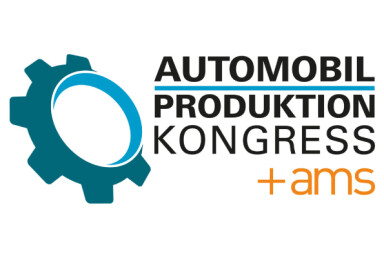Analysis: Nexperia U-Turn
Nexperia turns: Beijing lifts ban following Trump-Xi summit deal

China has reversed export restrictions on critical automotive semiconductors following diplomatic intervention at the highest levels, though European manufacturers remain cautious about the speed and scope of the resumption.
The semiconductor standoff that threatened to halt automotive production across multiple continents has taken a decisive turn. China has lifted export restrictions on chips manufactured by Nexperia, the Dutch chipmaker at the centre of a geopolitical dispute between Beijing and The Hague, following a trade agreement reached between President Donald Trump and President Xi Jinping at the APEC summit in Busan, South Korea.
The resolution arrives after weeks of mounting alarm within the automotive industry, where manufacturers had warned that existing chip inventories would sustain production for only a matter of weeks. The export ban, imposed by China's Ministry of Commerce in early October following the Dutch government's seizure of Nexperia under emergency powers, had created an acute supply crisis for semiconductors that, whilst technologically mature, remain indispensable to modern vehicle architecture.
China will take appropriate measures to ensure the resumption of trade from Nexperia's facilities in China, allowing production of critical legacy chips to flow to the rest of the world
Diplomatic intervention breaks semiconductor impasse
The breakthrough emerged from the Trump-Xi meeting on 30 October, a session that lasted approximately one hour and 40 minutes at a military base adjacent to Busan's international airport. The Nexperia chip resumption formed part of a broader trade and economic agreement between the world's two largest economies, which also addressed fentanyl precursor chemicals, rare earth export controls, and agricultural trade.
According to a White House fact sheet published on 1 November, "China will take appropriate measures to ensure the resumption of trade from Nexperia's facilities in China, allowing production of critical legacy chips to flow to the rest of the world." The agreement commits China to halting retaliatory measures whilst the United States reduces tariffs on Chinese imports by 10 percentage points, effective 10 November, and suspends heightened reciprocal tariffs until 10 November 2026.

China's Ministry of Commerce confirmed on Saturday, 2 November, that it would "comprehensively consider the actual situation of enterprises and grant exemptions to exports that meet the criteria." The ministry framed the decision as reflecting China's role as a responsible major power that fully considers the security and stability of domestic and international supply chains, though it simultaneously accused Dutch authorities of creating the current chaos through improper interference in company internal affairs.
German supplier confirms export licence approval
The practical impact of China's policy reversal became apparent this week when Aumovio, a major German automotive supplier recently spun off from Continental, confirmed it had received an export exemption and resumed shipping Nexperia semiconductors and components containing them. Philipp von Hirschheydt, chief executive officer of the Frankfurt-based company, which employs more than 86,000 people globally, told Bloomberg that Aumovio received its export licence from Beijing earlier this week.
Von Hirschheydt stated that China's Ministry of Commerce lifted the broader Nexperia export ban on Friday, 6 November, though he cautioned that normalisation would take time. "It will take some time until all processes and procedures are running normally again," he noted. "In the coming four to six weeks, there could still be problems with supply."
Aumovio's successful application provides the first concrete evidence that China's exemption process is functioning, though questions remain about how broadly and swiftly other suppliers will gain access. The company had been among those facing acute pressure on its supply chains, as Nexperia components are embedded within numerous automotive assemblies that Aumovio manufactures for vehicle producers across Europe and beyond.
A number of practical questions remain as to how the exemption for export controls will be granted...Until the secure flow of goods begins again, the situation will remain critical
Implementation challenges remain for European manufacturers
Whilst China's announcement represents a significant de-escalation, European industry groups have responded with measured optimism rather than outright relief. The European Automobile Manufacturers' Association (EAMA), which had warned in October that chip inventories could run out within weeks, acknowledged the development but emphasised that critical uncertainties persist.
"A number of practical questions remain as to how the exemption for export controls will be granted," the association stated. "Until the secure flow of goods begins again, the situation will remain critical."
The association's caution reflects the complexity of unwinding a supply chain disruption that has affected virtually all European vehicle manufacturers and their tier 1 suppliers. Nexperia produces hundreds of millions of discrete semiconductors, diodes, transistors and MOSFETs annually across facilities in Hamburg, Manchester and Nijmegen, with a combined capacity exceeding 50 billion components. Yet approximately 70 per cent of chips manufactured in the Netherlands are sent to China for packaging and testing before being re-exported to customers globally.
This circular supply chain architecture meant that China's export restrictions created an immediate choke point that could not be easily circumvented. The chips themselves, though technologically mature and relatively inexpensive, perform vital functions in vehicle electrical systems and power management units, from switches and steering wheel controls to braking systems and airbag controllers.
Volkswagen, which established a dedicated task force to investigate how Nexperia components flow through its hundreds of supplier variants, stated it was continuing to assess the situation. BMW, Mercedes-Benz, Stellantis and Renault all indicated they were monitoring developments closely, though none have publicly declared that their supply chains have fully normalised following China's policy shift.
The geopolitical framework behind the resolution
The Nexperia crisis did not emerge in isolation but rather crystallised longstanding tensions over technology competition and supply chain security between the United States, China and Europe. The Dutch government's decision on 13 October to invoke the Cold War-era Goods Availability Act and seize control of Nexperia came after sustained pressure from Washington, which had placed Nexperia's Chinese parent company, Wingtech Technology, on its entity list in December 2024.
The United States subsequently expanded export controls on 29 September to encompass all entities at least 50 per cent owned by companies on the entity list, a provision that directly ensnared Nexperia despite its Dutch registration and European manufacturing footprint. The Dutch court cited "well founded reasons to doubt sound management" under Wingtech chairman Zhang Xuezheng's leadership, suspending him from his positions and prohibiting the company from altering assets, intellectual property, operations or personnel without explicit consent.
Beijing's retaliation followed swiftly. Beyond blocking Nexperia exports from Chinese soil, China tightened export controls on rare earth elements critical to semiconductor manufacturing, creating a broader technology standoff that extended well beyond the immediate Nexperia dispute. President Trump had threatened 100 per cent tariffs on Chinese exports in response, escalating tensions that appeared headed toward a protracted impasse with potentially severe consequences for global manufacturing.
The Busan agreement represents a deliberate step back from that precipice. Trump described the meeting in his habitual hyperbolic tone as "a 12" on a scale where 10 represents the best possible outcome, stating that he and Xi "agreed to almost everything" during their session. Both leaders emphasised their personal rapport and expressed hope for improved bilateral relations, though substantive policy differences remain unresolved.
What the truce means for automotive production and supply chains
For automotive manufacturers and their suppliers, the immediate priority is confirming that chip flows resume at sufficient volumes to sustain production schedules. The industry operates on precisely calibrated just-in-time manufacturing systems where shortages of components representing a fraction of total semiconductor content can render entire vehicle architectures inoperable.
Nexperia holds approximately 40 per cent market share in the segment covering transistors and diodes used in automotive applications, according to research firm TechInsights. The company generated $2 billion (£1.54 billion) in sales last year, with roughly 60 per cent of revenue derived from automotive customers. Switching to alternative suppliers requires obtaining new certifications through lengthy homologation processes that cannot be compressed into days or weeks, particularly for components carrying stringent automotive qualification standards such as AEC Q100 and Q101.
Obviously, a positive resolution to a potentially disruptive situation that should keep US and global automaking on track
The Alliance for Automotive Innovation, representing General Motors, Toyota, Ford, Volkswagen, Hyundai and nearly all major automakers operating in North America, praised the agreement reached between Trump and Xi. "Obviously, a positive resolution to a potentially disruptive situation that should keep US and global automaking on track," the group's chief executive officer, John Bozzella, stated, specifically commending the president and his team for treating the global semiconductor supply chain as both an economic and national security issue.
Yet the crisis has exposed fundamental vulnerabilities within automotive supply chains that extend beyond the immediate Nexperia dispute. The concentration of semiconductor packaging and testing operations in China, combined with the fragmentation of ownership structures across geopolitical fault lines, creates structural risks that cannot be easily mitigated through diplomatic agreements alone.
Read the latest AMS articles
-
Murugan Boominathan on how Magna is managing digital change across complex operations
-
2025: The year the factory floor outpaced the C-suite
-
AMS Talks 2025-2026: The Human & The Machine in Carmaking
-
How automation and AI are powering Xpeng's EV production
-
Register now: Digitalisation - Smarter automation
-
Register now: Advanced Manufacturing and Sustainability
-
Ford pivots factories from pure EVs to hybrid future
-
Why Ford is turning to Renault for its next B-segment EVs
-
2026: BMW appoints production chief Milan Nedeljković as next chairman
-
Automation standards: collaborative tools driving innovation
European policymakers have sought to address these vulnerabilities through initiatives such as the European Chips Act, though a European Court of Auditors report in April cast doubt on the programme's ability to meet its stated objectives. The report projected that Europe would achieve an 11.7 per cent global semiconductor market share by 2030, well short of the 20 per cent target, citing ambitious goals, insufficient funding and intense competition from rival incentive policies in other countries.
The Dutch government's willingness to invoke emergency powers and seize control of a major semiconductor manufacturer, whilst extraordinary in form, reflects a broader recalibration of Western industrial policy toward technology sectors deemed critical to economic security.
The United States enacted the CHIPS and Science Act with similar objectives. Other jurisdictions are pursuing comparable strategies, signalling that the era of purely market-driven semiconductor supply chains has effectively ended.
What remains uncertain is whether the current truce represents a durable resolution or merely a temporary pause in a longer-term restructuring of global technology supply chains. The one-year suspension of various export controls and tariff measures negotiated in Busan provides breathing room but does not resolve the underlying tensions that produced the crisis. The Dutch government retains control of Nexperia, with restrictions on asset transfers and personnel changes remaining in force. Beijing's willingness to deploy export controls as geopolitical leverage has been clearly demonstrated.
For automotive manufacturers, the lesson is unambiguous. Supply chain resilience can no longer be assumed. The concentration of critical component production within geopolitically contested regions creates exposure to disruptions that individual companies cannot control through conventional procurement strategies. Whether the industry responds by diversifying suppliers, maintaining larger inventories, or redesigning vehicle architectures to reduce dependence on specific component categories remains to be seen.
What is certain is that the Nexperia crisis, even as it moves toward resolution, has permanently altered the landscape within which automotive supply chain decisions are made. The intersection of technology competition, national security concerns and industrial policy has become too consequential to ignore. Manufacturers that fail to account for these dynamics in their strategic planning do so at considerable risk.
















